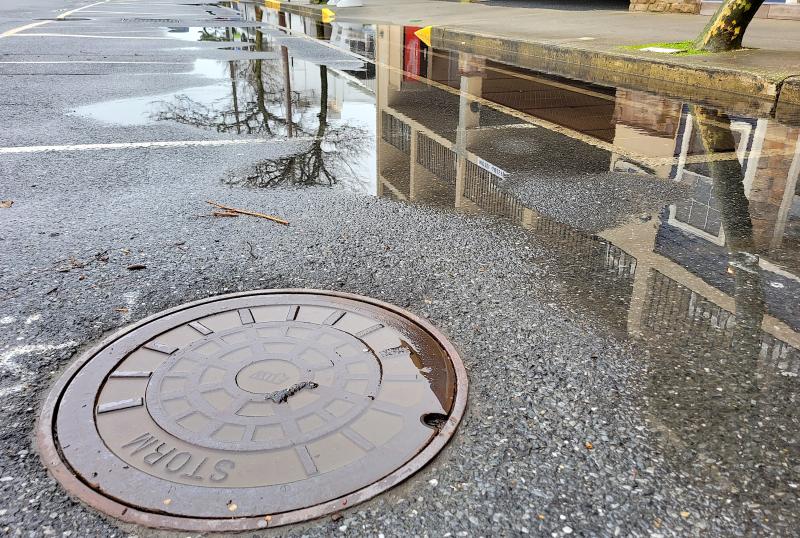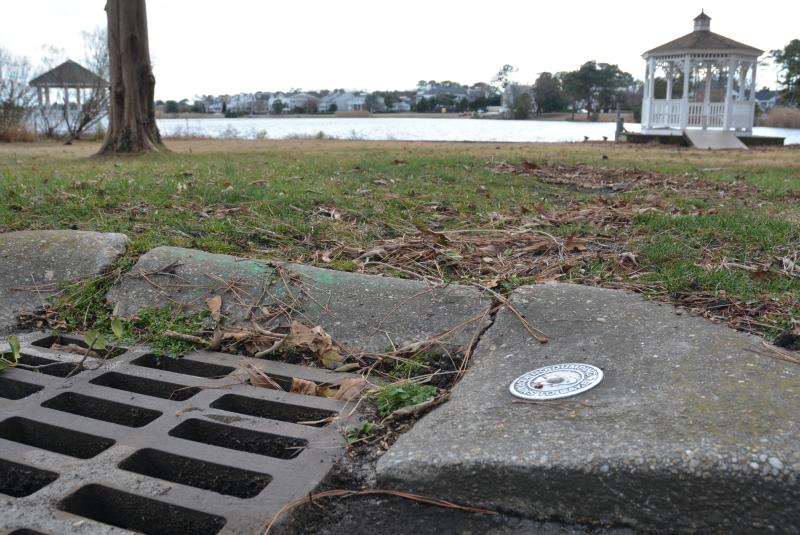Rehoboth cautiously moving forward on stormwater utility
Rehoboth Beach commissioners recently got their first look at a proposal for the creation of a utility to pay for millions of dollars in needed stormwater infrastructure improvements over the coming years. And while there are still many questions to be answered, it appears the group is tentatively on board with continuing down a path of implementation for fiscal year 2025.
The city created a stormwater utility task force over a year ago, made up of more than a dozen stakeholders representing as many different groups as possible. The task force met many times before formalizing its recommendation to city commissioners earlier this year. Commissioner Jay Lagree, who chaired the task force, and engineer Christine Estes, who works for city contractor AECOM, presented those recommendations to city commissioners April 19.
Beginning in 2023, Rehoboth has about $5.6 million worth of capital expenses over the next four years, including the design and construction of a stormwater basin in the area of Kent, Cookman and Sussex streets that has an estimated price of $1.4 million, and stormwater improvements on Bayard Avenue that are expected to cost about $1 million. There’s also an average of about $670,000 per year in operations and maintenance during that time frame.
The task force has recommended a funding method called stormwater billing units. It’s based on a set impervious surface size, which, as of now, would be 500 square feet. That set number is then divided into the total square footage of impervious space on a lot to get the number of units per property. That number of units is then multiplied by the unit rate to get the annual bill.
Lagree compared the billing method to someone’s water bill. That fee is based on every 1,000 gallons of water used; this fee would be based on 500 square feet, he said.
As presented to commissioners, the rate includes 100% of capital improvements, and operations and maintenance. Under that scenario, beginning in fiscal year 2025, which starts April 1, 2024, the annual cost for a typical single-family residential property with 3,000 square feet of impervious surface would be about $420.
There’s a five-year outlook that includes a 5% escalator, which means by FY 2029, the cost would be $515. The city would charge itself about $32,000 the first year.
Rehoboth’s proposed rate is significantly higher than the three other municipalities in Delaware with a stormwater utility – Wilmington, Newark and Lewes. According to information presented when the task force first started meeting earlier this year, all of those municipalities have an annual cost that’s hundreds of dollars less than the proposed rate for Rehoboth.
Commissioner Tim Bennett said he was fine with continuing to move forward with the process, but he didn’t support the idea that property owners should shoulder the burden. There needs to be a bit more creativity for how it’s paid, he said.
“I’m 100% against residents footing the whole bill,” said Bennett.
Lagree said there are a lot of things that could be done, such as adding a dollar to the hourly parking meter rate or adding an amount to new building permits. It would be an easy thing to do, as long as it’s kept in the general fund, he said.
Currently, the city uses money from its general fund to pay for stormwater-related improvements. Lagree said City Finance Director Bert Dukes has recommended the city continue to put money in the general fund, but also create a separate category within the fund that would be exclusively used for stormwater.
On a parallel track, the city is expected to begin moving forward on the creation of a stormwater management plan soon.
Commissioner Edward Chrzanowski said he’s concerned this path could lead to the discovery of more issues, which would cause an increase in the annual rate.
Public Works Director Kevin Williams said that could happen, but he would be surprised if more issues popped up that the city isn’t aware of. This has been going on for years and the issues are known, he said.
The ratio of pervious to impervious surface on each individual property would be based on GIS data created in 2016. As proposed, there would be an appeals process established to allow property owners to seek a modification to their bill to account for possible changes since the GIS data was collected. This would be done on a case-by-case basis, said Lagree.
As proposed, exceptions to the utility would be federal property, state roads, and state and city rights of way. However, the city would collect from all other residential, commercial, school and tax-exempt properties.
Tax-exempt properties still have stormwater runoff, said Estes. Most communities charge the tax-exempt because it’s equitable, she said.
Among the biggest concerns raised by commissioners was the implementation of a communication plan related to the need of the utility. Lagree said he’s been in contact with Communications Director Lynne Coan and she’s ready to go. The commissioners just need to decide which direction to move, he said.
Ultimately, commissioners decided to wait on taking action to allow for more public comment. The plan is to resume discussion at the commissioner workshop Monday, May 8.
Chris Flood has been working for the Cape Gazette since early 2014. He currently covers Rehoboth Beach and Henlopen Acres, but has also covered Dewey Beach and the state government. He covers environmental stories, business stories and random stories on subjects he finds interesting, and he also writes a column called Choppin’ Wood that runs every other week. He’s a graduate of the University of Maine and the Landing School of Boat Building & Design.

























































